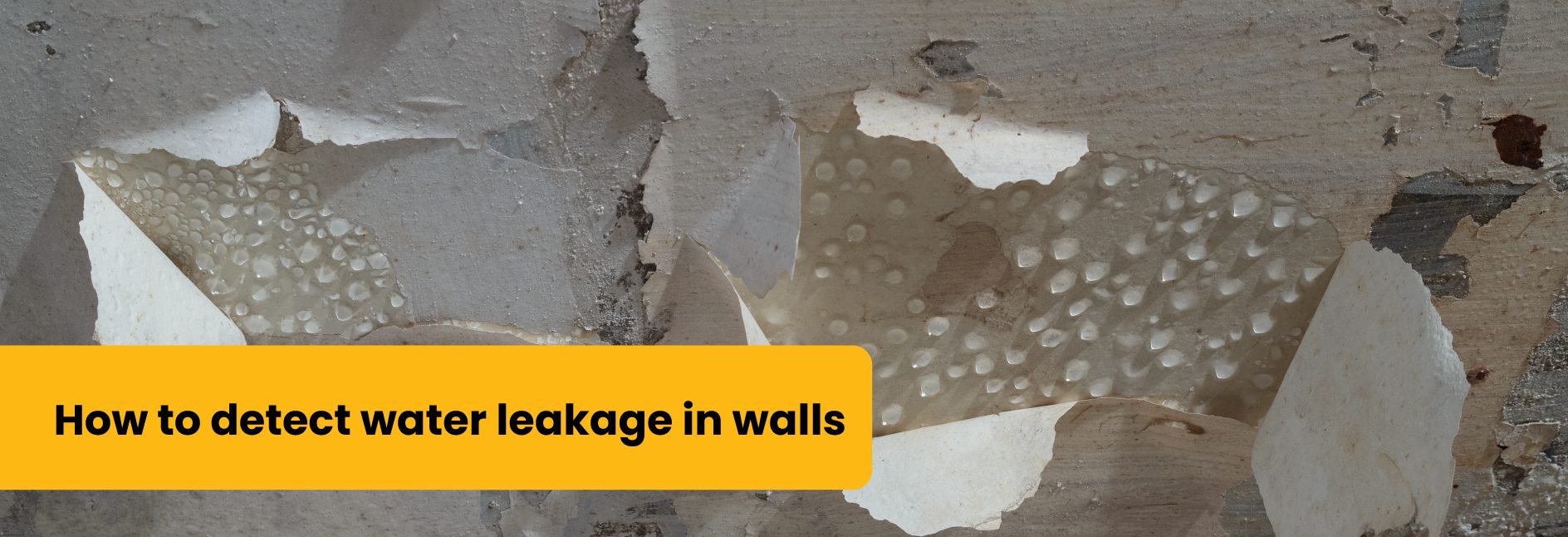After considering your house and how you want to live, you’ve decided to renovate it. However, where do you begin renovation work? Well, PropCheck provides a house renovation checklist that breaks down the process from pre-planning to punch list. In this article, you’ll find the basics of a House Renovation Checklist, along with tips and tricks for a successful renovation work project.
Introduction
Home renovation is just as beneficial as purchasing a new home, and if done correctly, it may also be relatively less expensive, less stressful, and more organized. The simplest and least expensive approach to improve your living and get closer to the home of your dreams may be to remodel your home.
Even if you desire to maintain your home’s historical roots and architectural history, an upgrade and change are necessary. Without leaving home you’ve lived in for years and made memories in, renovation work is the solution to fusing tradition and contemporary.
A distressing list of concerns may arise when renovating your home, such as “where to start?”, “budget to fix,” “who to call,” “how to know what is correct,” “where to hire specialists for renovation work,” and so forth. Perhaps take a moment to relax since PropCheck has put up a list of things to think about before you begin remodeling your home!
House Renovation Checklist: Where to Begin?
Naturally, it is important to understand why you are doing a home renovation in the first place. Do you want a change? To make more room? To offer? To renovate the antiquated components of your home? You must first determine that.
The next thing to do is to fix the budget. Three criteria may be used to determine the overall cost of renovations:
- Estimated Duration
- Design Ideas
- Budget
If you are renovating your complete home, you will need specialists such as plumbers, electricians, painters, carpenters, furniture assemblers, installation experts, architects and designers. You will need to choose whether the option—hiring one provider for the complete makeover or hiring several pros for various tasks—works best for you and is more affordable in this situation.
When creating your budget, you should take into account whether you plan to move out of the house or stay there. If you decide to move out, you should also think about the costs involved.
House Renovation Process
Using the aforementioned House Renovation Checklist to help you make your decision, you may be curious about the ideal renovation of the house process. You won’t need to plan anything by hand if you hire a project manager to oversee the restoration of your home.
Follow this House renovation procedure checklist, nevertheless, if you’re intrigued or intend to undertake the work yourself:
Planning: Planning the logistics is the ideal place to start and is always a crucial stage in any project. If required, you must finalize your budget, get drawings, and secure planning approval.
Preparation: Planning is followed by preparedness. Make sure your house has the required access, the top personnel is hired, and the proper materials are sourced.
Construction: Your home remodeling process starts with building, which is perhaps the most exciting phase. Depending on the extent of your home modifications, this may entail demolishing your house, erecting brand-new buildings, and adding new flooring, walls, and windows.
Water, Gas, and Electric: It’s possible that these necessary utilities need to be added for your remodel to work properly.
Finish: Finally, you can decide to use paint, wallpaper, new flooring, lighting, and furniture to renovate your upgraded house.
Although not all home improvement projects will adhere to every step, employing the aforementioned house renovation process checklist might help you avoid skipping any crucial steps.
Exterior
Inspect the Grounds
- A suitable drainage system away from home.
- There is no sign of standing water.
- There are no septic tanks or field leaks.
- No branches should be hanging or touching the roof.
- The pathways, yard, and landscaping are all in terrific shape.
- Other buildings, such as fences, decks, garages, retaining walls, and sheds, are in good shape.
- Deck and stairway railings are safe.
- Patios, walkways, and driveways are all in terrific shape.
- Drainage from downspouts is directed away from the home or other structures.
Structures
- The visible foundation is straight and free from obvious fissures.
- Windows and doors have square frames.
- No siding is broken or harmed.
- No exterior stains or peeling paint.
- The garage door operates as it should.
Doors, Windows & Trim
- Wooden trim pieces and frames are solid, not decaying or breaking.
- Frame joints are sealed with caulk.
- No screens or glass that is cracked.
Interior
Rooms
- The ceiling, walls, and floors are all level and straight.
- Flooring that is clean and undamaged.
- Flooring, ceilings, and walls that are clean and free of stains.
- There are no paint chips.
- Correctly installed, good-quality wood trim.
- Light switches work properly.
- There is a heating/cooling source in every livable space.
- Adequate wall insulation.
- The windows are in good shape.
- The doors are intact and work properly.
- The door frames are in fair shape.
- The fireplace flue is clean and functional, with no cracks/damage in masonry.
- Cabinets are functional.
- Smoke detectors are working.
Kitchen
- Operating exhaust fan that vents to the outside.
- Electrical outlets should have GFCI (ground fault circuit interrupter) protection if they are within 6 feet of a sink.
- The dishwasher drains well and is leak-free.
- The sink has no leaks.
- The cabinet behind the sink is free of stains, mould, or deterioration.
- The sink has a sufficient water flow.
- Garbage disposal shows no symptoms of excessive corrosion or damage.
- The cabinets are intact and work properly.
- The sink has no leaks.
- The toilet is functional and sturdy, and the foundation is free of stains.
- Tub/shower area caulking in fair shape.
- Shower/tub tiles are solid and undamaged.
- There is no sign of leaking at the tub or shower base.
Bathrooms
- Working exhaust fan with an external vent.
- All fixtures receive proper water pressure and flow.
- Drainage in the sink, tub, and shower is good.
Hall space
- Adequate release.
- Pipes that are exposed have insulation.
- No insect affliction.
- Not harmed by wetness.
Home Systems
Plumbing
- There are no leaking or broken pipes.
- The water pressure is constant.
- The plumbing works well.
- The water heater runs smoothly.
Electrical
- Functional and grounded electrical outlets are available.
- Insulation is sufficient.
- The electrical wiring is safe and functional.
- The service panel isn’t becoming too hot.
HVAC System
- The HVAC system in the house runs efficiently.
- Clean air filters.
- The ductwork is in good shape.
- Air ducts and pipelines are free of asbestos.
Conclusion
To ensure a thorough home renovation process, always hire a professional. This House Renovation Checklist is only a small portion of what a certified person will help you with. If you’re ready to begin your home renovation, call an expert from PropCheck today and have a detailed discussion with them to renovate your house.
Frequently Asked Questions
What is a renovation of house process?
- While you are buying the house, you must start planning the renovations.
- Take your construction partners to the job site to sketch up a plan of action after showing them the photographs and the floor plan.
- Decide when to start the remodeling procedure.
- Create a day-by-day and week-by-week objective for each activity to make sure the deadline is fulfilled.
- Work together to coordinate the various tasks, including those performed by the painter, mason, electrician, and plumber.
- It is time to move on to the items you would require after the workers have been decided. Create a budget before starting the buying process.
What are the first steps to renovating a house?
- Planning: 1 month
- Demolition: 2 weeks
- HVAC, Electrical & Plumbing: 5 days
- Framing & Drywall: 10 days
- Painting: 1 week
- Cabinets & Fixtures: 1 week
- Doors & Windows: 5 days
- Clean House & Air Vents: 1 day
- Flooring: 1 week
- Trim and Finish Work: 1 week
How can we renovate a house step-by-step?
- Make a plan
- Set a budget
- Hire a contractor
- Talk to your insurance company
- Secure permits and order materials
- Start demolition
- Work behind the walls
- Paint and install flooring
- Install cabinetry
- Add finishing touches
How to plan a renovation for a house?
- Create a thorough plan for your home improvement project
- Define the project budget
- Employ contractors
- Construct a timeline
- Prepare for your home renovation by packing
What renovations can increase the value of a house?
- Redo your kitchen
- Renovate a bathroom
- Update your home’s HVAC
- Amplify outdoor living space
- Make your home more accessible
- Update your light fixtures





